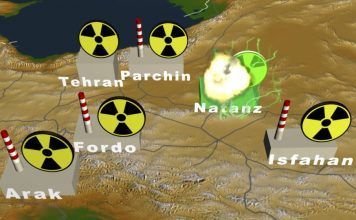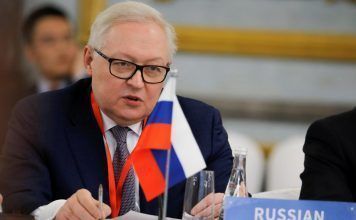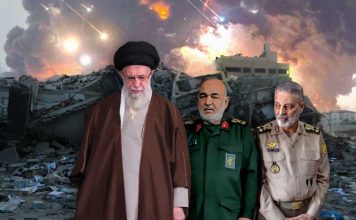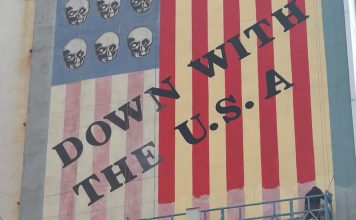By Francois Murphy
VIENNA, Aug 29 (Reuters) – Iran is pressing ahead with its rollout of an upgrade to its advanced uranium enrichment programme, a report by the U.N. nuclear watchdog seen by Reuters on Monday showed, even as the West awaits Iran‘s response on salvaging its 2015 nuclear deal.
The first of three cascades, or clusters, of advanced IR-6 centrifuges recently installed at the underground Fuel Enrichment Plant (FEP) at Natanz is now enriching, the report said, the latest underground site at which the advanced machines have come onstream.
[aesop_image img=”https://kayhanlife.com/wp-content/uploads/2021/12/2009-12-01T120000Z_1741179056_GM1E5C11KX201_RTRMADP_3_NUCLEAR-IRAN-RUSSIA-BUSHEHR-scaled.jpg” panorama=”off” credit=”An Iranian operator (R) and a Russian operator discuss a document as they monitor the nuclear power plant unit in Bushehr, about 1,215 km (755 miles) south of Tehran. REUTERS/FILE PHOTO” align=”center” lightbox=”on” captionsrc=”custom” captionposition=”left” revealfx=”off” overlay_revealfx=”off”]
Diplomats say the IR-6 is its most advanced model, far more efficient than the first-generation IR-1 – the only one the deal lets it enrich with.
For more than a year Iran has been using IR-6 centrifuges to enrich uranium to up to 60% purity, close to weapons-grade, at an above-ground plant at Natanz.
Recently it has expanded its enrichment with IR-6 machines at other sites. Last month a second IR-6 cascade at Fordow, a site buried inside a mountain, started enriching to up to 20%.
In the confidential report to U.N. member states, the watchdog, the International Atomic Energy Agency, wrote: “On 28 August 2022, the Agency verified at FEP that Iran was feeding UF6 enriched up to 2% U-235 into the IR-6 cascade … for the production of UF6 enriched up to 5% U-235.”
Uranium hexafluoride (UF6) is the gas centrifuges enrich.
Of the two other IR-6 cascades installed at the Natanz FEP, one was undergoing passivation with depleted UF6, a process that is carried out before enrichment proper begins, and the other had yet to be fed with any nuclear material, the agency said.
Iran and the United States appear to be inching towards an agreement to revive the 2015 deal, which placed restrictions on Iran‘s nuclear activities in exchange for lifting sanctions against Tehran. That deal unravelled after a U.S. withdrawal in 2018 prompted Iran to breach those restrictions one by one.
After more than a year of indirect talks, Iran has said it will soon respond to the latest U.S. comments on a compromise text submitted by the European Union, which is coordinating the talks. Read full story
A deal would involve undoing much of the enrichment work Iran has been doing, and capping its enrichment at 3.67% purity.
Its installation of advanced machines at underground sites like Natanz and Fordow, however, could be a signal to any power that might want to attack it if there is no agreement, since it is unclear that airstrikes on those sites would be effective.
Western powers worry that Iran is moving towards the ability to make nuclear bombs. Iran denies any such intention.
(Reporting by Francois Murphy; Editing by Chris Reese and Howard Goller)







